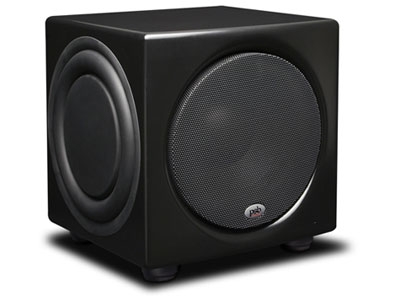PSB Synchrony Home Theater Speaker System Page 3

| The Short Form |
| Price $10,000 (as tested) / psbspeakers.com / 905-831-6555 |
| Snapshot |
| PSB's new flagship delivers true high-end performance from top to bottom. |
| Plus |
| •Benchmark sonic performance •Genuinely full-range towers will please two-channel purists •Smooth, slim, handsome looks |
| Minus |
| •Wood-finish quality merely very good •Switching surrounds can be awkward |
| Key Features |
| Synchrony One ($4,500/pair) •(3) 6.5-in woofers; 4-in midrange; 1-in titanium dome tweeter; 43 in high; 61 lb Synchrony One C ($2,000) •(2) 5.25-in woofers; 4-in midrange; 1-in titanium dome tweeter; 24.3 in wide; 37 lb Synchrony S ($2,000/pair) •(2) 6.5-in woofers; (2) 1-in titanium dome tweeters; 13.3 in high; 20 lb HD10 ($1,500) •10-in woofer; (2) 10-in passive radiators; 750-watt amplifier; 12 x 13 x 13 in (w/drivers, feet, and connectors); 38 lb |
| Test Bench |
| The Synchrony One exhibited excellent low-frequency extension, followed by a 250-Hz floor-bounce notch and other modest irregularities up through its operating range. A large tweeter peak at 18 kHz is shared by the One C and S as well. The C showed no off-axis lobing, while the S showed the interference patterns typical of di/bipole speakers. The sub hit 110 dB max SPL at 62 Hz, but its output capability fell off at nearly 30 dB/octave below 50 Hz. - Tom Nousaine Full Lab Results |
The 2002 film Hero might have been conceived purely as a home theater spectacular. From the opening sequence, thundering hooves, wind-whipped pennants, and clanging swords swirl around the audience with gloriously dynamic, dimensional movement. The PSB Synchrony home theater speaker system conveyed every one with energy and grace.
The Synchrony One C center speaker produced a perfect tonal match to the towers, with voices sounding identical in timbre to the same played monaurally via the towers (save the inevitable spatial effects of a spaced pair instead of a point source). Off-axis center sound was nearly as exact: I heard a very slight bit of "lobing" peaks-and-dips from the paired woofers, but only deeply off-axis and mostly below the critical vocal range in frequency.
The Synchrony S surround speakers were equally adept in their dipole connection. Hero's falling-leaves fight scene (Chapter 6) is a tremendous test for surround-bubble integrity, but I heard very nearly zero discontinuity from center to fronts to surrounds, which approaches the finest performance I've encountered.
Although the One towers could certainly handle fairly serious home theater unaided - and the full system could play loud as hell, given enough watts - the little PSB HD10 subwoofer added distinctly to my setup. The Kodo drumming that's prominent in the opening minutes of Tan Dun's Hero score gained weight and slam with the sub onboard. Still, if I were assembling a flat-out theater, I'd probably look to more (bigger) woofage to do justice to the Synchrony line.
Bottom Line I tried manfully to find some Synchrony flaws to cite. The speakers are of but average sensitivity and are nominal 4-ohm loads, so some competent amplification will be required. The PSBs' real-wood finish, though rich and handsome, wasn't as glassy-smooth as that of some other expensive speakers I've seen. And though I fully understand the decision not to rely on a potentially signal-sapping switch, cross-jumpering the surrounds for dipole playback makes it difficult to switch modes on the fly for surround music and movies.
Otherwise, according to my value system for loudspeakers - honest octave-to-octave balance, precise imaging, expansive spatial accuracy, freedom from dynamic compression, and absence of coloration - PSB's Synchronys are among the best loudspeakers I've auditioned in my studio in several years. You could easily spend substantially more and do no better, or not as well. Synchrony was definitely worth the wait.
Full Lab Results Photo Gallery Test Reports RSS Feed More Test Reports Back to Homepage What's New on S&V
- Log in or register to post comments




















































